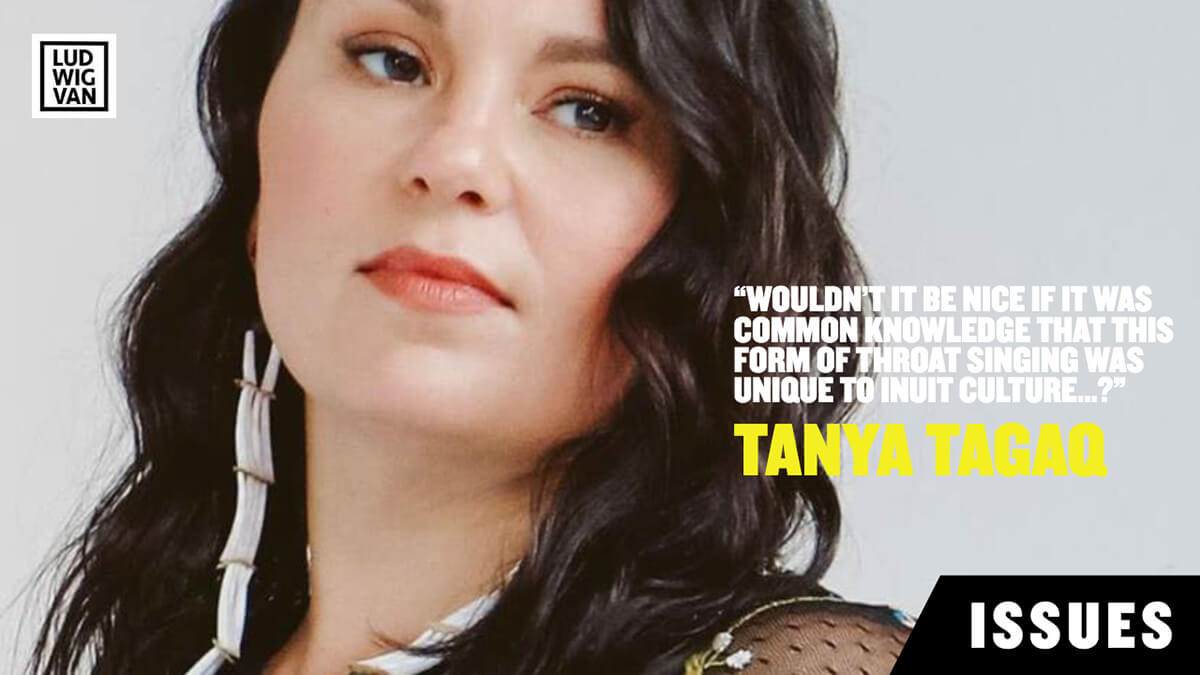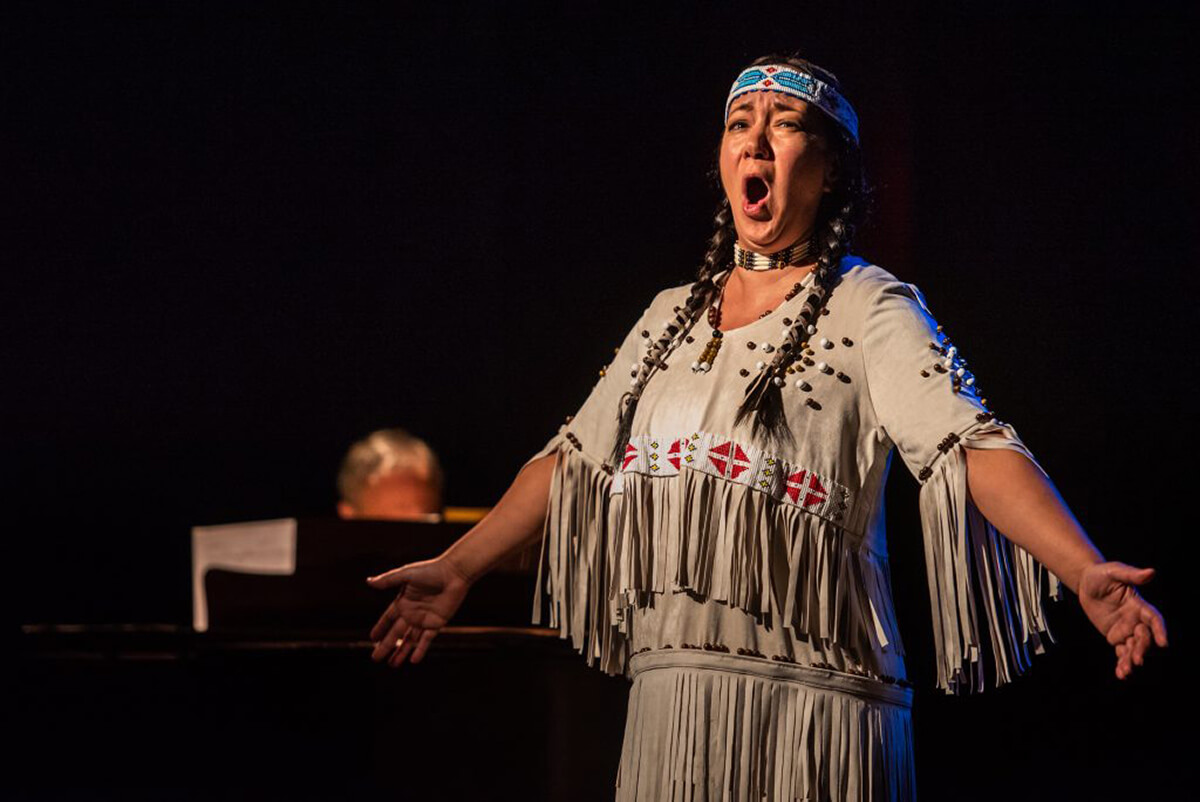
Cultural appropriation has made headlines in Canada again from a source that comes as unexpected to many. The Arnaqquasaaq Collective, a group of Inuit women artists, took to social media to call out the Indigenous Music Awards (IMA,) and one of its nominees earlier this month for appropriating Inuit throat singing.
Tanya Tagaq took to Twitter to voice her opinion. “Wouldn’t it be nice if it was common knowledge that this form of throat singing was unique to Inuit culture and not a pan-Indigenous free for all?”
The controversy has drawn international attention, with editorials appearing everywhere from The Guardian in the UK to the Wall Street Journal, whose editorial board wrote disparagingly, “this reductio ad absurdum has caused major drama at the Indigenous Music Awards in Winnipeg.”
The Indigenous Music Awards are part of the yearly Manito Ahbee Festival. At the Junos, and most other music awards, all Indigenous music is crammed into a single category. At the IMAs, in contrast, artists are nominated in a wide variety of award categories. At issue is a nomination in the Folk Music category by Edmonton-based Cree Nehiyaw artist Connie LeGrande, who performs under the name Cikwes. Her album Isko contains some songs that incorporate throat singing.
LeGrande says she was taught throat singing to stand in as a last-minute replacement at an awards ceremony years ago, and has used the practice since then. “What I do is not Inuit throat singing,” she told the Toronto Star. “I have went on and put my own expression and my own sounds because I don’t know their sounds.”
LeGrande has refused to withdraw her album from the award competition. She told a Toronto Star reporter that she had consulted the elders of her own community, the Bigstone Cree Nation in northern Alberta. She says the elders told her that all music and art is a gift from the Creator, and that cultural ownership was actually a colonial notion brought by a Eurocentric society.
She was echoed by Lisa Meeches, executive director of the Manito Ahbee festival, who told CBC Manitoba radio interviewer Ismaila Alfa that she did not recognize the issue of cultural appropriation between any Indigenous peoples. “Creator and spirit don’t understand that kind of language and that kind of rhetoric,” she said.
On LeGrande’s online bio, she describes her musical influences as being, “rooted in Woodland Cree traditions, with creative influences ranging from throat singing, jazz, soul, [R&B] and reggae.” She sings in both English and Cree.
To non-Indigenous Western audiences, this is just another mash-up of musical genres. To Inuit artists, however, and also many in the First Nations community, it’s about much more than that — it’s about ownership of a culture that was, until a mere generation ago, in serious danger of disappearing.
Throat singers Tanya Tagaq, Tiffany Ayalik, and Kayley Inuksuk Mackay (who perform as PIQSIQ), Kathleen Ivaluarjuk Merritt (who performs as IVA), and Kelly Fraser, or the Arnaqquasaaq Collective, have refused to perform at the IMAs, and have withdrawn their own albums from any nominations. The group says their decision was not made lightly, and was the result of two months of private meetings and consultations between the Inuit artists, IMA directors, and Cikwes. The group has been joined by a number of other prominent Indigenous artists, including A Tribe Called Red. Their boycott isn’t just for this year, either. The group says they will abstain from the awards entirely until their concerns are addressed.
It can seem confusing to those outside the Indigenous community, but on one level, the answer is simple: all Indigenous peoples are not alike. Cree and Inuit are two different peoples, with different traditions and spirituality. According to the group, it’s a matter of maintaining cultural identity. Inuksuk Mackay, a throat singer of the duo Piqsiq, is quoted in Windspeaker magazine.
“The idea (is) that we need to be recognized as a unique Indigenous people’s group in Canada and not a homogenized pan-Indigenized group…. It’s important that we are allowed to maintain that distance from (First Nations) to tell our own story and sing our own songs.”

Toronto based mezzo-soprano Marion Newman has been noted for her “rich, opulent tone” and she has sung the roles of Carmen and Rosina in Il Barbiere di Siviglia in an international career. With a background that mixes Kwagiulth and Stó:lo First Nations, English, Irish, and Scottish, she has also used her talent and the art of opera to bring more awareness to Indigenous issues. That has included creating the role of Dr. Wilson in Missing, by Brian Current and Marie Clements, an opera about the shocking numbers of missing and murdered Indigenous women in Canada, and singing the lead role of Noodin-Kwe in Giiwedin, a First Nations opera by Spy Dénommé-Welch and Catherine Magowan, and a world premiere.
Her career offers a completely different angle on Indigenous artists and culture. “It’s a completely colonialist structure,” she says of opera. Despite their vastly different origins, however, Newman sees parallels between the traditions of opera and those of the ceremonies of her First Nations roots. “For me, it’s an extension of what we do on the West Coast,” she explains. She describes ceremonies that incorporate masks, elaborate costumes, and dramatic elements. “All over the world, musical storytelling is a tradition.”
Newman also points out that opera itself cannot be viewed as a pure expression of Western art. “Opera has borrowed from many different cultures,” she says. “Opera benefits from Indigenous culture.” No one is suggesting that collaboration is impossible, as she points out. It’s a matter of how it is approached. The first principle is to listen rather than insist. “To be given the proper permission,” Newman emphasizes.
Ownership of culture is a different kettle of fish depending on who you are. Indigenous culture in Canada cannot be understood without referencing The Indian Act and its often highly discriminatory regulations, along with the residential school system. Both were conceived as part of a larger plan of stripping all Indigenous peoples in Canada of their culture and unique identities. Religious and cultural practices such as throat singing were outlawed. In 1925, for example, an amendment to the Act forbade all First Nations people from practicing their traditional dances. A First Nations person would lose their status if they graduated from university, or became a doctor or lawyer, in an attempt to force their assimilation into Canadian society.
The residential school system in Canada was modelled after existing schools in the US and throughout the British colonial empire, including Ireland, Australia, and even in Sweden with the Indigenous Sami people. After decades of neglect and a patchwork system of missionary schooling that sought to stamp out traditional practices, in the 1950s, there was a push from the federal government to force Inuit children into European-style education and residential schools on a national scale.
Their native language, and any traditional cultural practices were forbidden. “Our ways of telling stories were illegal,” says Newman. Often confused with what is known as overtone singing, which is practiced by cultures in Tibet, Tuva, and Mongolia, Inuit throat singing, or katajjaq, is a type of performance that is unique. It derives from an ancient oral tradition as practiced by Inuit women.
Residential schools began to be phased out in the Arctic in the 1970s, leaving a people struggling to reclaim their own traditions. The wounds are fresh, and it’s not ancient history.
It’s also a matter of having a place in an already under-exposed niche market. Mackay tells Windspeaker magazine, “She’s put herself in competition with Inuit women who have been working, some of us for decades, to reclaim this tradition and quite literally using this hard-won skill to put food on the table for our families.”
The Inuit community’s resentment is exacerbated by the fact that there are no Inuit members on the IMA board.
The IMA organization has held largely held their ground in maintaining LeGrande’s nomination for the best folk album. They point out that the award is not for Inuit or traditional music. However, their statements are somewhat ambivalent. The organization noted in a release, “We don’t presume to agree or disagree on this matter at this time, as it requires great reflection, ceremony and discussions on how we move forward in a good way, to ensure that we as Indigenous people uphold our teachings, and do not provide a platform for negativity and separation.” The organization explained that the judging was done by a group of music industry professionals who do not know the heritage of the nominees whose work they are evaluating. They have also promised to add at least one Inuit member to its board of governors, and develop a cultural appropriation policy.
Newman calls the reclamation of culture after the generations blighted by the residential school system “a giant learning process” that is ongoing. “It would do everyone some good to allow us to take control of our voices.”
The dominant culture never has to worry about disappearing from view. “It’s about feeling strong enough and safe enough to freely share without care,” she says.
“We’re not there yet.”
LUDWIG VAN TORONTO
Want more updates on classical music and opera news and reviews? Follow us on Facebook, Instagram or Twitter for all the latest.
- THE SCOOP | The Glenn Gould Foundation Receives $12 Million Funding In Federal Budget - April 19, 2024
- THE SCOOP | Conductor Yannick Nézet-Séguin Receives Honorary Fellowship From Royal Conservatory - April 19, 2024
- INTERVIEW | Larry Weinstein Talks About His Film Beethoven’s Nine: Ode To Humanity, Premiering At Hot Docs - April 18, 2024



